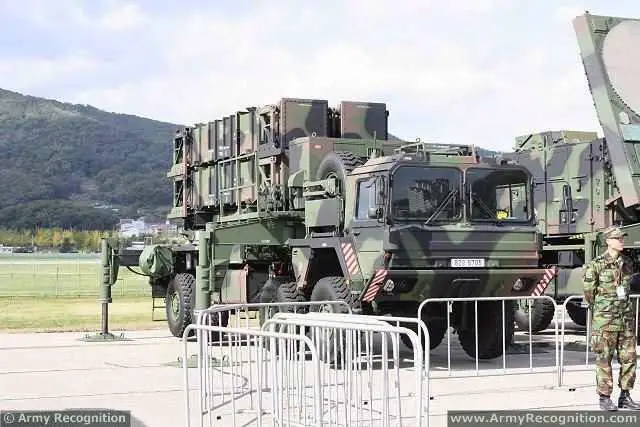|
|
|||
|
Defence & Security News - South Korea
|
|||
|
|
|||
| South Korea will be equipped with new weapons to counter North Korea nuclear & missile threats | |||
|
South Korea on Wednesday, March 30, 2016, announced plans to introduce new weapons to counter nuclear and missile threats from North Korea, including the GPS-guided ground-to-ground munitions, nonlethal bombs to neutralize the electric grid of the enemy and enhanced radar systems to detect incoming attacks.
(Source The Korea Herald website) |
|||
|
|
|||
 South Korean Army Patriot air defense missile system South Korean Army Patriot air defense missile system |
|||
|
|
|||
|
The armed force of South Korea will spend a total of 226.5 trillion won ($196.7 billion) from 2017 to 2021, the primary focus of which will be spending 7.9 trillion won in preparing against potential attacks from Pyongyang, said the Ministry of National Defense. Seoul’s 18.6 trillion won research and development plan includes the “graphite bomb,” also known as a “blackout bomb” or “soft bomb.” Using fine carbon filaments over electrical compounds, the nonlethal weapon is used to disrupt the enemy’s electrical supply. Its key technologies will be developed by the ministry-affiliated Agency for Defense Development, and will be deployed in the field by the early 2020s, the ministry said. Another segment of the new plan is introducing the enhanced antiballistic early-warning radar against the North’s submarine-launched ballistic missiles. South Korea believes the North will be able to deploy a SLBM within the next three or four years. Seoul’s surveillance system currently includes two ground-based Green Pine radar units to detect upon a launch, then track and calculate the estimated location of its fall. Officials said the new radar will work on a similar principal, but have substantially improved functions. The military also said it has changed the required operational characteristics for its radars to detect smaller drones from North Korea. Antiballistic missiles, radar and ground-to-air munitions all were introduced this year in light of the bellicose rhetoric and show of force from the communist country. |
|||
South Korea will be equipped with new weapons to counter North Korea nuclear and missile threats 10104161
- Posted On















